This character writing guide is a one-stop resource for creating types of characters in fiction. Learn key characterization terms, how to develop characters, how to write stronger character descriptions, and more. Use the links to jump to the character writing subtopic you want to explore now.
Character terms: Key concepts
Read useful character definitions plus a concise explanation of important concepts in character writing.
To develop characters to cast your story, it helps to understand what is:
Character
A figure in a book, play, film or video game or other media. They may be human (e.g. Anna Karenina), animal (e.g. Beatrix Potter), hybrid, alien, or an anthropomorphic object (e.g. Mr Potato Head in Toy Story).
We also use the word to describe the qualities and traits that create personality or persona. For example, we say a very giving or altruistic person has a ‘selfless character’.
Characterization
The way a character is built through narration and other dramatic and narrative devices (such as voice, action, reaction, habits, strengths, flaws and other details).
Character development
Often used synonymously with characterization – the way a character grows and changes (’round’ characters develop whereas ‘flat’ characters like Jessica Fletcher in Murder She Wrote don’t and are more static).
For a detailed look at how to write and use flat characters read our comprehensive post.
GMC
Short for ‘goal, motivation and conflict’ this term (popularized by Debra Dixon in GMC: Goal, Motivation and Conflict) refers to core elements of character development.
Goals are what characters want, motivations why they want then, and conflict the obstacles (internal or external) that complicate the path to success.
Character arc
The change process a character undergoes in a story due to its events.
Character arcs include the rising and falling action (or peaks and valleys) of setback and disaster (valley) or progress and triumph (peak).
Many arcs are archetypal and common to many stories, such as ‘rags to riches’ (e.g. the character arc of ‘Cinderella’).
Backstory
Character background that informs who your character already is when your story picks up (it may be alluded to, shown in flashbacks, or not shown but used by the author to inform a character’s personality and actions and reactions).
Recommended reading
Nothing shows a man’s character more than what he laughs at.
Goethe
Organize and outline character ideas
Use Now Novel’s story dashboard to brainstorm character ideas and get help from a caring critique community.
START NOW
Character types: Roles and parts in stories
There are many character types, archetypes, and sometimes even stereotypes. Specific kinds of characters go with specific genres (for example, an amateur sleuth belongs in a cozy mystery).
Read a brief overview of character types plus find helpful articles exploring classes of character (and how to write them) in depth:
Overview of common character types
Archetypes
Archetypes are universal types of characters that recur in fiction and mythology.
The Swiss psychoanalytic theorist Carl Jung was instrumental in developing this concept, particularly in The Archetypes and the Collective Unconscious.
Key character archetypes and what each values:
- Caregiver – values service
- Ruler – values control
- Artist – values creativity/innovation
- Innocent – values safety
- Explorer – values freedom
- Everyman – values belonging
- Jester – values pleasure
- Lover – values intimacy
- Hero – values mastery
- Magician – values power
- Outlaw – values liberation
- Sage – values knowledge
Learn more about archetypes below and in our detailed look at the 12 Jungian archetypes:
Character archetypes: How to enrich your novel’s cast
Learn about archetypal characters and using this concept to finesse goals.
Stereotypes
Stereotypes are clichés that may be harmful or offensive to people with specific identities or histories in how they tend to ignore, oversimplify or ‘flatten’ human complexity. They are often used for ‘edgy’ or politically incorrect humor.
Often they have complex political or even propagandistic undertones. For example, the trope of the ‘angry black woman’ is often criticized for falsely representing BIPOC women as inherently aggressive in a way that dismisses history or the nuances and responsibilities of representation.
Another stereotype that is that sometimes found in writing is that which is concerned with LGBTIQ+ characters. Avoid tropes such as the ‘sissy villain’ or ‘gay best friend’, for instance.
Learn more about avoiding simplistic stock character types:
Character tropes: 5 tips to avoid stock types.
Round vs flat characters
‘Round’ or three-dimensional characters are often compared to ‘flat’ characters who don’t have as much change or development.
‘Pip’, the hero of Dickens’ Great Expectations is an example of the round type. He changes as his fortunes and personal wealth change, from a scared orphan crying in a graveyard at the story’s start to a ‘new money’ young man in fancy clothes thanks to a mysterious benefactor.
This character type is typical of a bildungsroman or coming-of-age story like Dickens’ novel.
A flat character like Sherlock Holmes may go through diverse story scenarios but tends not to change or develop much in persona. They may have catchphrases they always say, such as ‘elementary, my dear Watson’, or stock phrases such as James Bond’s martini order.
Flat characters are often the comforting constant in a sea of change.
Protagonists
Protagonists or main/primary characters are the primary decision-makers in a story who propel its action.
Stories may have one or more protagonists, and they are often discussed alongside antagonists. A protagonist may be a hero (in that they pursue the greater good or uphold values that are societal norms) or antihero (for example, a protagonist who commits murder like Rodion Raskolnikov in Crime and Punishment).
Learn more about writing strong protagonists:
Protagonist examples: Creating memorable main characters
Learn what makes main characters memorable and how to write protagonists.
Antagonists
Antagonists are primary opponents whose desires compete with or oppose the protagonist’s own.
For example, the stepmother with her jealousy and poison apple in Snow White.
Learn more about writing antagonists:
Antagonist examples: How to write great adversaries
Learn from antagonists in novels and what they teach us.
Secondary characters
These are peripheral or important characters who may fulfil important roles to main characters such as:
- Friend/confidant
- Mentor/guardian
- Sidekick/henchman (depending on whether allied to the protagonist or antagonist)
- Love interest (though this may also be a protagonist, especially if they are a primary viewpoint narrator during the story – more on this below)
The above types of secondary characters are involved secondary characters because they take part in the action.
Non-involved secondary characters include extras (for example the crowd in a stadium, maybe briefly described) and walk-ons (characters who pass through the story and fulfil a set purpose, for example the ‘friendly innkeeper’ type).
Learn more about the uses of background characters:
Writing background characters: 5 uses
Genre-specific character types
In addition to the broad types above, there are character types specific to different genres (though not all the types below necessarily appear, for example, a hero might not have a sidekick):
- Romance: Romantic leads, friends, rivals
- Comedy: ‘Straight man’ or foil (the serious character who contrasts a comedic part or goof)
- Fantasy: Hero/heroine, villain, sidekick, guardian/mentor
- Crime thriller: Detective, police officer, victim/survivor, witness, suspect
- Mystery: Sleuth/detective (pro or amateur), suspect, lead
- Science fiction: Scientist, (space) explorer, cyber expert, inventor
- Action: Hero/heroine, villain, adversary, sidekick, love interest
The treatment of these different character types is often guided by genre. For example, a love interest in an action story may simply provide the protagonist something (or someone) to fight for, to risk losing.
In romance, by contrast, the unfolding romantic relationship is at the center of the story – the action overall revolves around the relationship (and not necessarily beating ‘the bad guys’).
Recommended reading
The main question in drama, the way I was taught, is always,
David Mamet
‘What does the protagonist want?’
Character ideas: Ways to come up with your cast
Finding character ideas for a story is a lot easier once you have a central idea, your story’s premise or scenario.
Use the ‘Central Idea’ prompt process in Now Novel’s story dashboard to brainstorm and finesse a story idea to start.
Once you have your story idea, to find character ideas and finesse them:
Create character profiles
Think of a character profile like an ID that tells way more than age, gender, birthdate and birthplace.
You could create a PDF for each character and save these to Google Drive and create a spreadsheet with links to each document (our downloadable story PDF grows as your ideas do, with pagination and clear sections for each character).
Organize your character research and brainstorming so that you can refresh your memory on what you’ve already established for your characters easily. This is especially useful if you’re writing a series or epic with a large or revolving cast of characters.
‘Reverse cast’ your story
Look at Pinterest boards or use AI image creation tools like This Person Does Not Exist to find inspiration for the look, feel and style of a character.
Build characters from your scenario
Read through your story idea summary and brainstorm characters whose goals, motivations and conflicts align to your idea (keep reading for more on GMC and how to use it to develop characters).
Recommended reading
When writing a novel a writer should create living people; people not characters.
Ernest Hemingway
A character is a caricature.
Character development:
Creating characters who change
In great stories, who, what, why, where and when change in meaningful ways.
Developing characters ensures your reader will go on a journey with emotional highs and lows.
Learn about core drivers of character development – goal, motivation and conflict – as well as how to create character arcs with structure and satisfying shape in this section.
Character goals: What the cast of your story wants
Goals in developing characters are crucial. Your characters may have several types of goals as your story progresses. For example:
- Initial goals: The first steps your characters must take, what they need to achieve in the opening scene of your story
- Surprise goals: Spur-of-the-moment decisions characters make, new plans that arise out of setbacks, conflicts, and unexpected events
- End goals: Your characters’ ultimate objectives (such as Frodo destroying the One Ring).
Learn more about characters and desire in storytelling:
Character development: 9 tips for arcs with depth
Learn how to give your character arcs dimension and depth.
Motivations: Why characters want what they do
Motivations are crucial to creating a character and their goals. Why people desire things is intrinsically linked to their broader story, beliefs and emotions.
A despotic king, for example, might demand total obedience because he fears rebellion and wants to stay in power.
Your characters’ motivations might arise from one or more of the following:
- Beliefs, whether true or false (for example, an archetypal caregiver such as a nurse in WWII may believe in the good of caring for the injured)
- Backstory and formative experiences (a person may work doubly hard for success or self-sabotage due to what they’ve been through)
- Basic necessity such as the need for sustenance, freedom, shelter, love, etc – Maslow’s hierarchy of needs
- Personality and values For example the ‘Explorer’ archetype might seek out wild adventure for the thrill of the unknown
Learn more about creating characters with compelling motivations:

100 character development questions
Find character questionnaires to flesh out arcs.
Conflicts between characters (and within)
Conflict is equally crucial to developing characters in stories. In Greek mythology, Hercules becomes the hero precisely through completing tough tasks that test his ingenuity and resolve.
In this part of this guide, we’ll explore types of conflict that drive character development.
Two conflict types in fiction: Internal and external
There are two broad categories of conflict in stories: Internal conflict, and external conflict.
Internal conflict
Internal conflict is your character’s inner struggle. It may arise from:
- Contradictory desires (such as ‘being the hero’ versus ‘staying safe’)
- Flaws or wounds (for example, a dancer who had a bad experience with a teacher may be hesitant to keep pursuing their passion)
- Beliefs or doubts that impede action (for example, someone who is given a quest or task who does not yet believe in their own ability)
External conflict
External conflict refers to conflict between characters (or between a character and their environment, society, or other external sources). It arises from many sources including:
- Conflicting desires between characters (for example, a relationship where one spouse wants to emigrate but the other does not)
- Conflicting goals (for example, a hero must destroy an object that is the antagonist’s only hope of returning to power)
- Hostility of environment or society (for example, a woman in a patriarchy struggles against the narrow or oppressive gender roles prescribed, like in The Handmaid’s Tale)
How does conflict develop characters?
Conflict develops characters because it:
- Supplies stakes or ‘worst case scenarios’ should your character fail (for example, an out-of-work character being evicted if they can’t find a job)
- Makes characters’ path toward victory more uncertain (and thus often requires personal change or mastery)
- Makes action necessary for resolution: Conflict is unsustainable, forcing characters to act if they are to find peace, shelter, safety or harmony
Learn more about internal and external conflict and character development:
- External and internal conflict: Examples and tips
- How to use central conflict and drama to drive your novel
- Creating villain motivations: Writing real adversaries
- Writing character backstory that feels real: 5 tips
- Development of characters: 6 intriguing ways we change
- Character arc template: 5 steps to strong character arcs
- How do you write character growth? 7 tips

Join 13,000 writers
Be first to know whenever we publish and get bonus videos
and the latest Now Novel news.
Characters and conflict: Driving change and stakes
We examined the two main types of conflict between characters above. In this section learn about types of conflict that could drive your story’s action.
Key types of conflict between characters include:
- A struggle with self (often called ‘man vs self’). Robert Louis Stevenson’s Strange Case of Dr Jekyll and Mr Hyde is a classic example of this kind (a legal practitioner investigates a man with a dangerous, urge-compelled alter ego).
- Person vs person conflict (also known as ‘man vs man’). This is a very common type of conflict in epic fantasy in which a hero faces off against a powerful magician or tyrant (e.g. Frodo vs Sauron in Tolkien’s famous fantasy cycle).
- Person vs nature is a classic type of conflict common in survival and adventure stories (such as, for example, The Swiss Family Robinson by Johann David Wyss, or the survival drama 127 Hours).
- Person vs society Some characters face not just a single foe but a society in opposition to fundamental desires or needs. A classic example of this is the ostracized Hester Prynne in Hawthorne’s The Scarlet Letter.
Learn more about types of conflict, external and internal, and how to use them to create interesting adversity in stories:
Using conflicts in a story: 6 helpful conflict examples
Read about 6 core types of conflict in fiction.
Learn more about types of conflict your characters may encounter:
This is precisely the time when artists go to work. There is no time for despair, no place for self-pity, no need for silence, no room for fear. We speak, we write, we do language. That is how civilizations heal.
Toni Morrison
Describing characters: Bringing fictive people to life
Character description is intertwined with character development. The stories of our lives and experiences are written on our bodies and in our speech. In this section of this guide, learn how to create vivid, varied character descriptions.
Ways to describe characters
There are almost infinitely varied ways to describe your characters, including:
- Physical features such as faces, bodies, the clothing your characters wear, the personal ways different characters might style the same outfit
- Movement and gesture such as posture, gait, habitual poses and expressions
- Voice including your characters’ vocal timbre and pitch, diction (how formally or informally they speak), accent and dialect. Written characters differ from film because narration provides voice too, not only spoken dialogue (or the occasional voiceover)
- Actions your characters’ actions describe their personality because they reveal personality traits (such as loving drama or being loyal, valuing others’ trust or deceiving whoever they can to get ahead)
See how to describe characters in varied ways with the help of these resources:

How to describe to immerse readers (complete guide)
Read a complete guide to writing description with examples from varied genres.
Recommended reading
Physical description
- How to describe eyes in a story: 7 simple tips
- Character posture: How to describe characters’ bearing
- How to describe hands: 6 ways to make characters real
- How to describe clothing in a story (with examples)
- Describing characters: How to describe faces imaginatively
- Character mannerisms: Describing character quirks and tics
How to describe voice and speech
- Realistic dialogue: Creating characters’ speech patterns
- Character voices: How to write persona using voice
- How to write accents and dialects: 6 tips
How to create characters’ personalities
- What are good character traits? 7 helpful attributes
- Character flaw list: 30 intriguing character flaws
General characterization
- How do you write good character description? 5 techniques
- Direct characterization: 6 tips for precise description
- Indirect characterization: Revealing characters subtly
- How to create a believable character: 8 tactics
- How to introduce characters: 6 ways to be memorable
- Characterization examples: 5 ways to reveal characters

GET YOUR FREE GUIDE TO SCENE STRUCTURE
Read a guide to writing scenes with purpose that move your story forward.
Learn moreNarration and POV: Who tells your story?
The narrator is the person or voice telling the story.
If your narrator is an involved character (and not a neutral narrating fly-on-the-wall voice), we say the story has an involved narrator. When you have an involved narrator, how your narrator tells the story (their language, voice, tone) builds characterization, too.
Point of view and types of narrator
Point of view (abbreviated to POV) refers to both whose point of view the story is told from, and the person used (for example, first-person narration using ‘I’, ‘me’ and ‘my’ versus third person using ‘he’, ‘she’, plural ‘they’ or gender neutral).
The point of view you choose for your story has specific character effects.
For example, if you use a first-person narrator, you can only tell the reader what that character knows, assumes, or makes up, while they are the viewpoint narrator (the person currently telling the story). Unlike an omniscient narrator, the first-person narrator cannot share other people’s private thoughts (unless they are a mind-reader).
How to create characterization via narration:
- Think about worldview or outlook: What is your narrator’s personality, politics, value system? How does this affect what they share?
- Bring in backstory or vocation: A visual artist may be more specific than others when describing colors, for example, or may use more metaphors borrowed from visual art
- Think about demographics: Where is your character from, and what is their age, class position, gender identity? Are any other demographic details significant? These may inflect their narrative voice (or their narrative voice might not immediately give away one or more of these details)
Learn more about ways to build characterization via narration:
In a portrait, you have room to have a point of view and to be conceptual with a picture. The image may not be literally what’s going on, but it’s representative.
Annie Leibovitz
Character questions: Prompts to populate your story
Character questions and questionnaires provide a useful way to delve deeper into your characters.
In our writing webinars, Now Novel writing coach Romy Sommer compares what you include about your character in your story to the tip of an iceberg. What the reader sees might not be everything you’ve dreamed and invented. Yet beneath the surface, there’s that depth, that anchoring.
Character questionnaire example
The first version of Now Novel’s story dashboard (revised 2018) included 15 categories of character questions to flesh out ideas for your cast:
- Demographics: E.g. ‘How old is this character?’
- Appearance: E.g. ‘In what style do they wear their hair?’
- Character specific: E.g. ‘Why is this character dissatisfied?’
- Work: E.g. ‘What do they do for a living?’
- Relaxation: E.g. ‘What are this character’s hobbies?’
- Food: E.g. ‘What kind of food do they like eating?
- Stuff: E.g. ‘What would they grab if their home were on fire?’
- Home: E.g. ‘Describe their living space’
- Family: E.g. ‘Are their parents still alive?’
- Childhood: E.g. ‘Did they have a happy or unhappy childhood? Explain.’
- Friends: E.g. ‘Who is their best friend?’
- Relationships: E.g. ‘What is the thing they argue about most in relationships?’
- Money: E.g. ‘What is their relationship to money like?’
- Fears: E.g. ‘What is their greatest fear?’
- Demeanor/personality: E.g. ‘On a scale of 1 to 10, how annoying do others find them?’
Not all of the above questions will be relevant for your character. Yet filling in questionnaires such as the above is a great way to get to know your characters as though they are real (and avoid the caricatures Hemingway warns about).
Read more questions to develop your characters:
What is a character writing question you’ve been thinking about? Share it in the comments. Start brainstorming characters now and outline and draft scenes with your character outlines in a helpful sidebar in the Now Novel Writing Pad or in Google Docs with our Docs add-on.

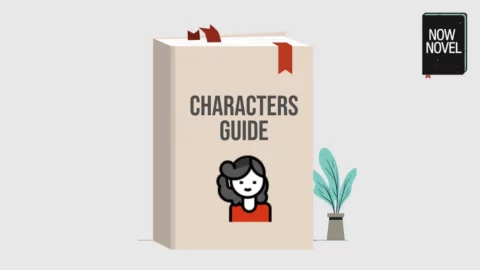
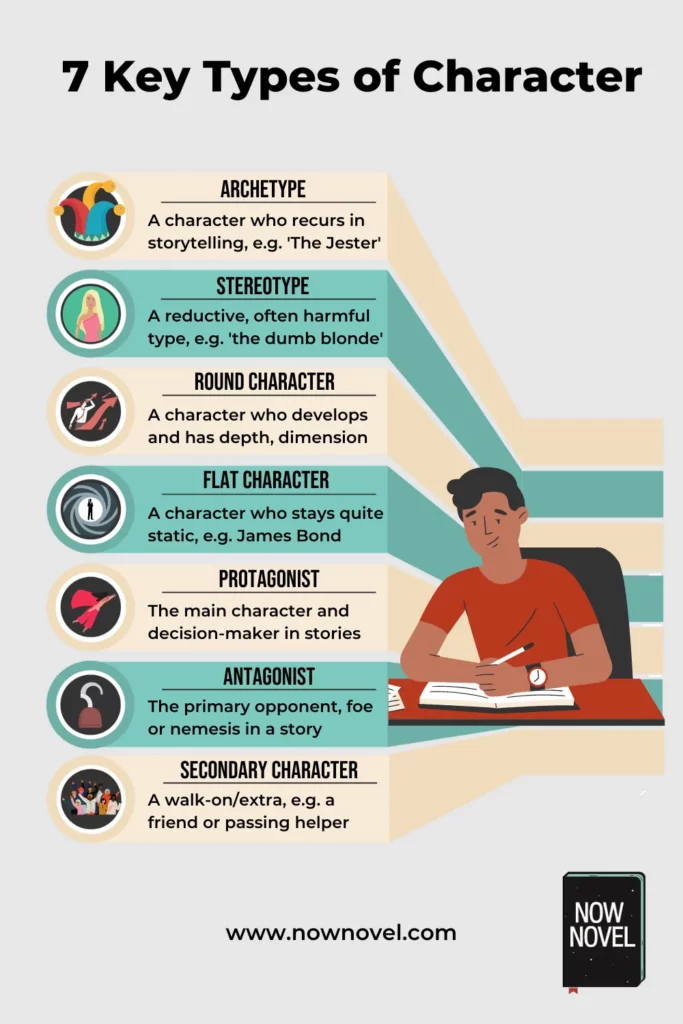
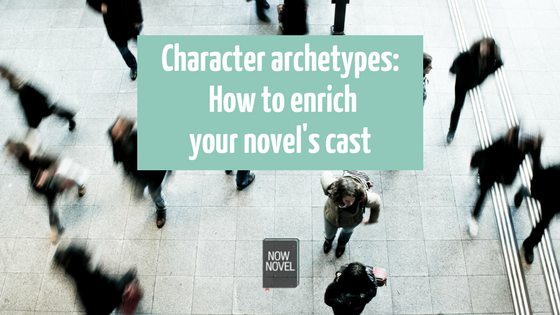
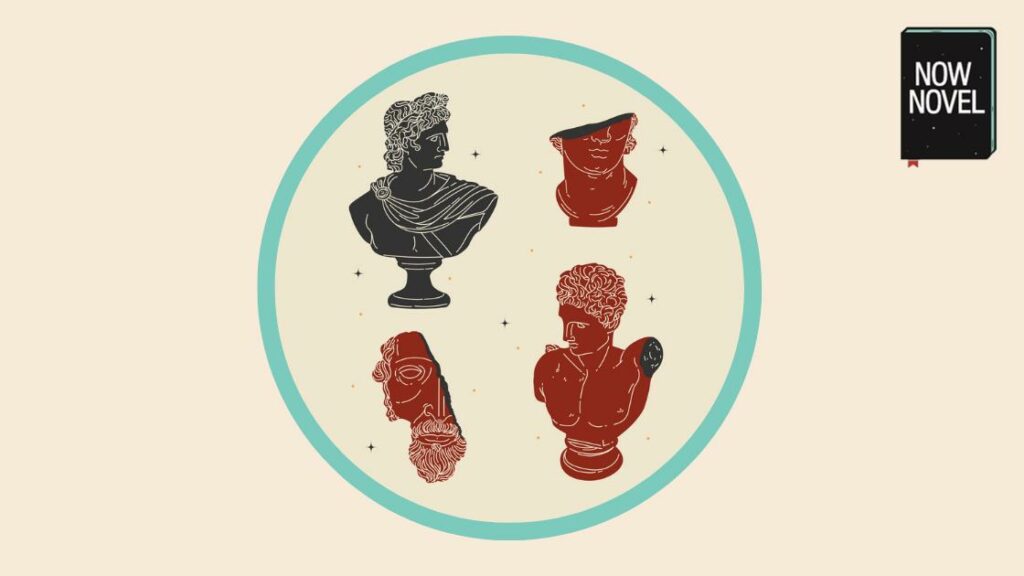
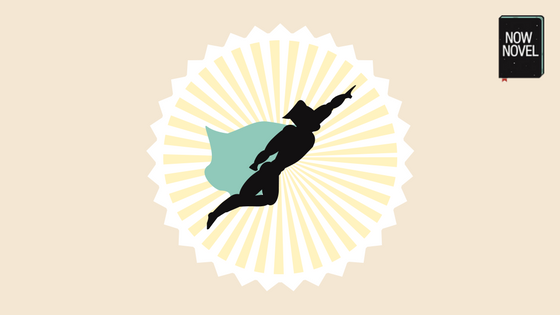
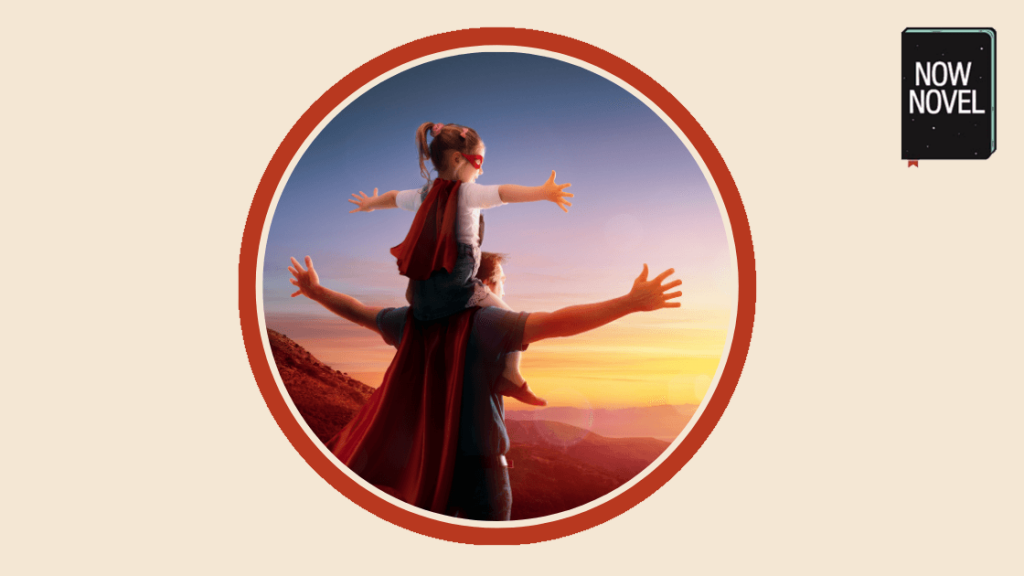
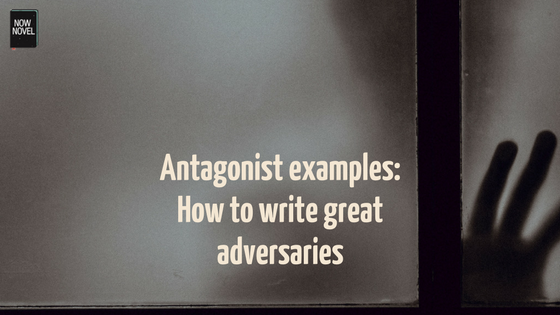
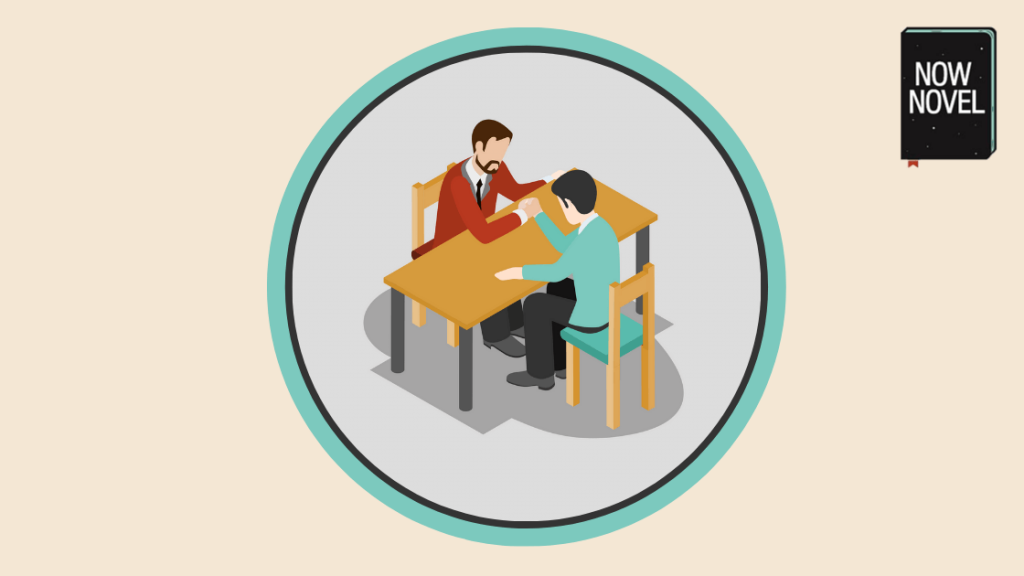
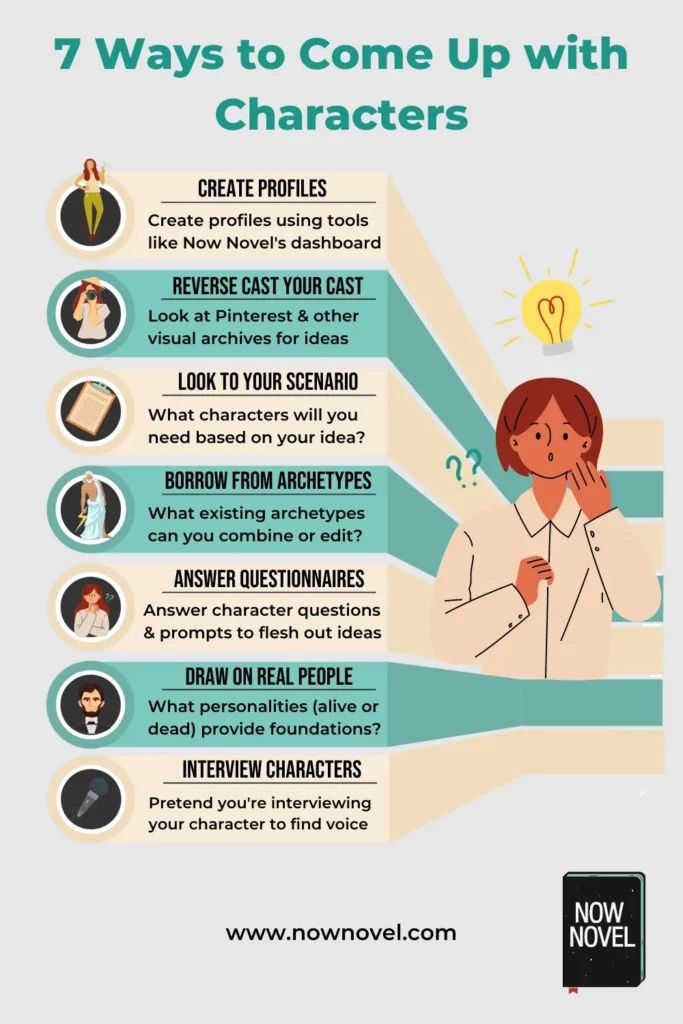

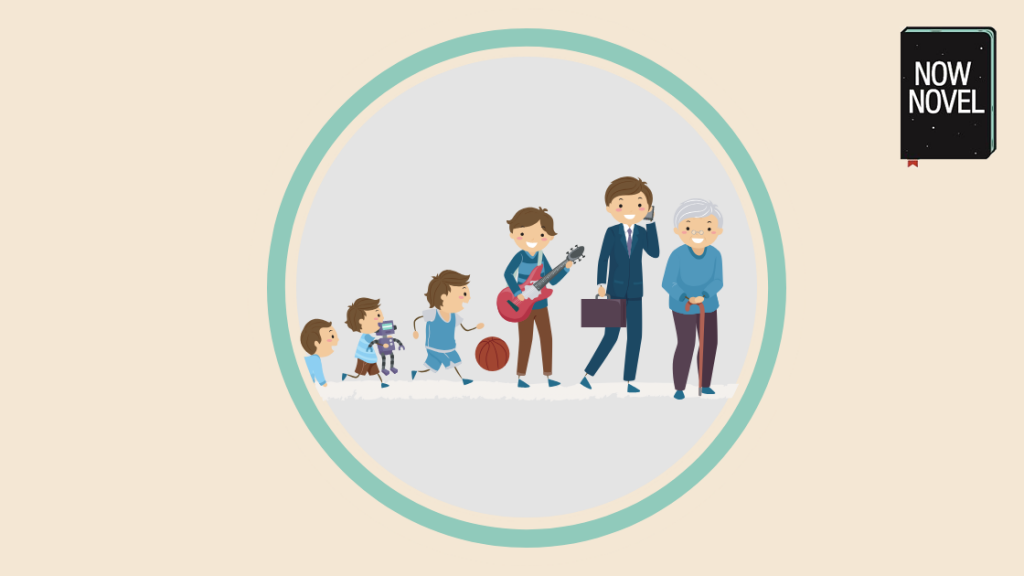



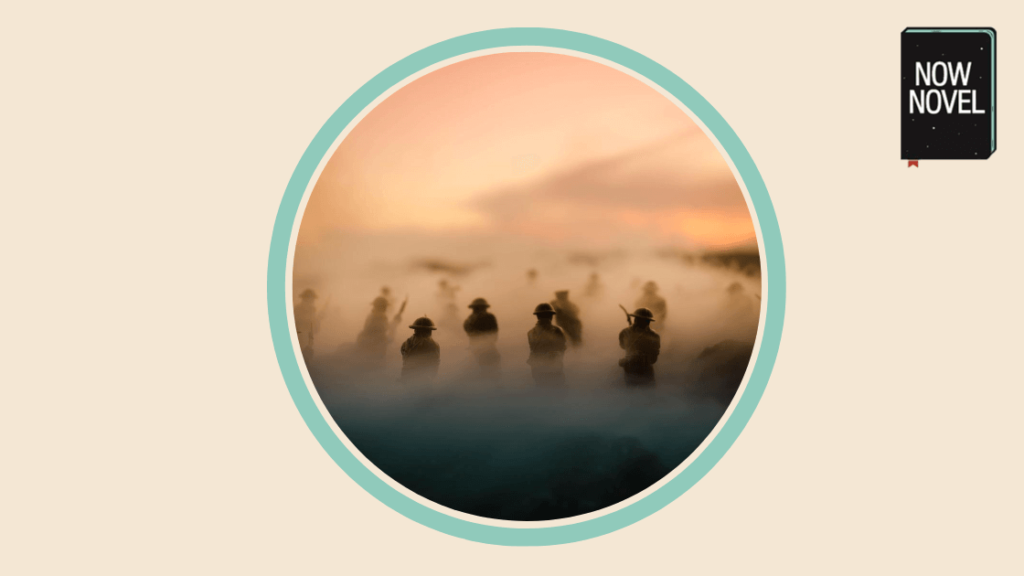
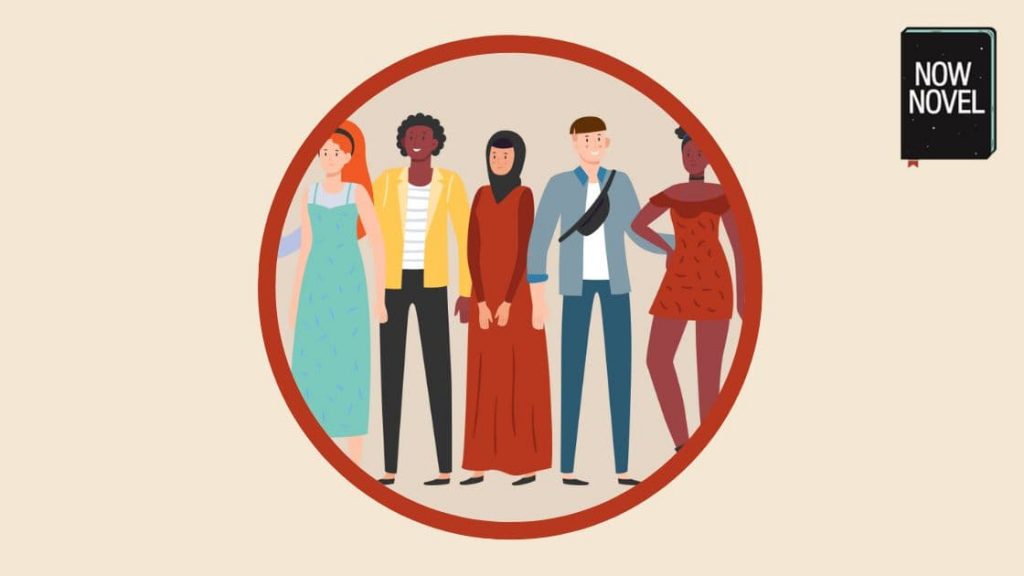

11 replies on “Character writing: Complete guide to creating your cast”
Many thanks. Had I read this post before writing my competition entry, i would have known better how to write a vivid description of a person.
It’s a pleasure, Ohita. Sorry for the delayed response – Disqus’ notification system is a little erratic. Glad you enjoyed it.
You should write a book about writing a book:))
That was gooooooooooooooooood!
yeah, I totally agree with @Mari@mariefeierabend:disqus , you gotta make a book about it!
btw recently seen this one too https://youtu.be/agSqtI9GICI actually couldn’t resist the temptation to share ahahahha I liked it so much too)
[…] and particular. Instead of describing a character who ‘loves freedom’, for example, describe a character’s actions and experiences that demonstrate this love of freedom. This gives readers a more visual and empathetic […]
Do or have any advice for characters who are based off of a real person?
Hi Katie, thank you for your question. It’s quite a broad one but I would say:
Good luck!
[…] Read advice on how to write better characters. […]
I like to make characters
how can you make a character. thank you ms. yanezz
Hi Stephanie, thank you for your question. Is there a specific aspect of character creation you’re finding challenging? One way to find character ideas Now Novel writing coach Romy suggested in a webinar was to create a Pinterest board and pin images of interesting faces and people as character inspirations, and to use these images as starting points for brainstorming personality details, goals, motivations, etc.
You can find all of our character-writing articles here.